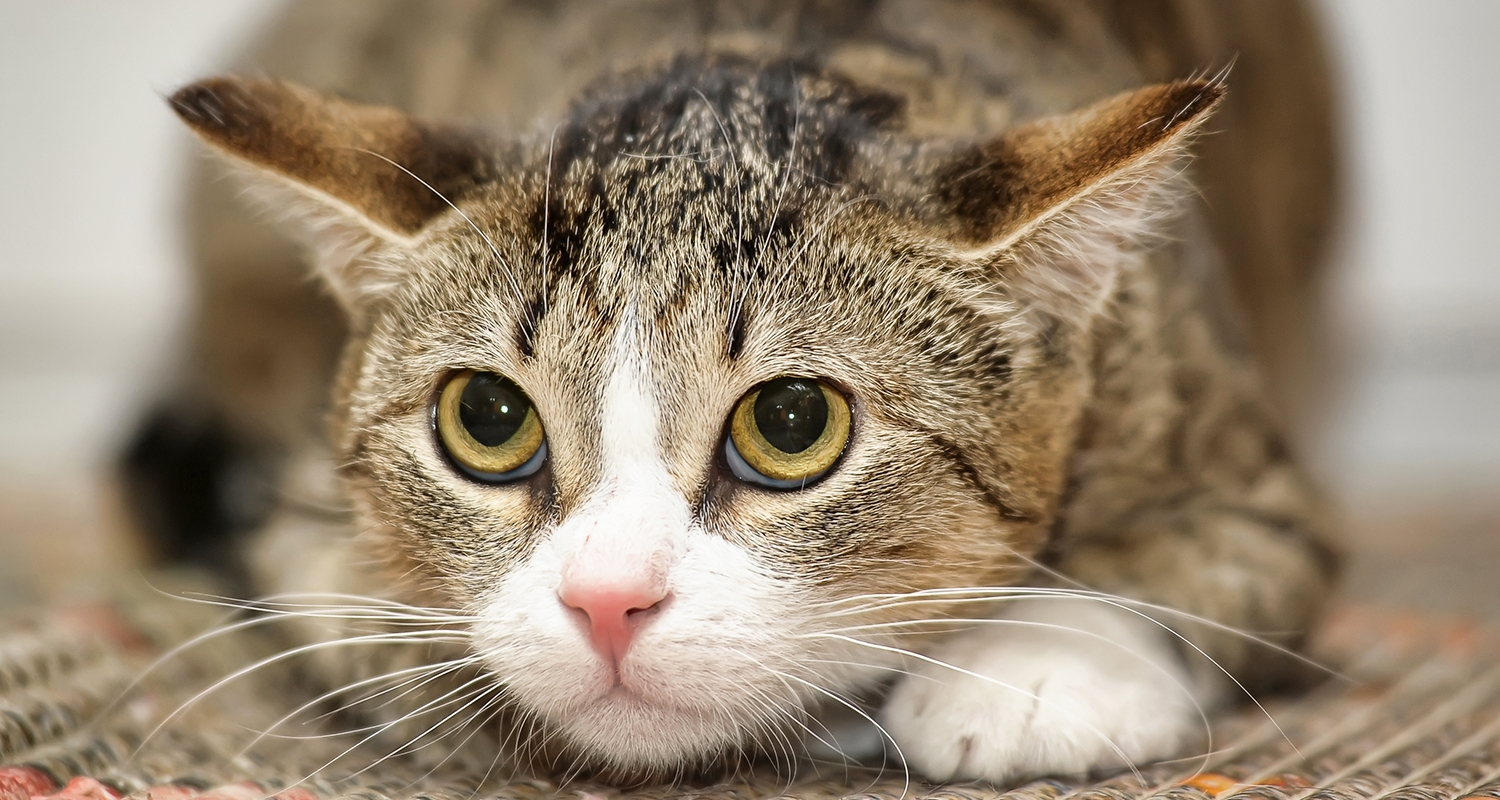
In cats more than 90 of nasal tumors are cancerous malignant. Nasal polyps are often seen in younger cats but older felines can also get them.

The incidence is higher in male cats.
Nasal blockage in cats. If you cat is breathing orally it may mean the nostrils are blocked by swollen membranes. Any cat having problems breathing should be examined immediately. When a nasal infection occurs your pets olfactory sense may also be affected which can and often does result in a loss of appetite.
Blockage of the Nasal Duct Epiphora Occasionally cats will experience a chronic overflow of tears due to an obstruction of the nasal duct called epiphora. This is more common in Persian and Himalayan breeds. Discharge can lead to congestion in which the nose becomes partially or fully blocked.
This affects the cats ability to smell which can impact the cats appetite. The most common cause of nasal congestion is cat flu usually caused by feline herpesvirus or calicivirus which is similar to a. Nasal polyps are benign fleshy growths that develop in the nasal passages of cats.
Nasal polyps are most frequently observed in young cats. The signs of nasal polyps often mimic an upper respiratory infection however these signs may persist with little response to medical therapy. Cat nasal congestion can be caused by an upper respiratory infection allergies a virus or even a tumor.
When your kittys breathing is wheezing and loud it may or may not be a serious health issue but difficulty with breathing is a justifiable reason for a trip to the vet. If your cat has always been a quiet sleeper and begins to snore loudly it may be a sign of a tumor blocking the nasal airways. When awake the symptom can be recognized by noisy breathing or shortness of breath.
Nasal polyps also known as nasopharyngeal polyps are benign fleshy masses that develop in the nasal passages of a cat. These growths can also be seen at the back of a cats throat inside the middle ear and ear canal or above the soft palate. Nasal polyps are often seen in younger cats but older felines can also get them.
Nasal discharge is present in some cats due to obstruction of nasopharyngeal drainage by a mass lesion or because of concurrent sinonasal cavity disease. Cats with nasopharyngeal disease may develop otitis mediainterna OMI from occlusion of the pharyngeal openings of the auditory tube by a mass lesion eg cryptococcal granuloma. In cats polyps in the nasopharynx obstruct the airflow through the nasal cavity and therefore are one of the obstructive nasal diseases.
Nasopharyngeal polyps are polyps found in the nasopharynx but not necessarily originating in the nasopharyngeal mucosa. There are a variety of symptoms which can be seen in cats affected by rhinitis and sinusitis including. Loss of appetite anorexia Nasal discharge ie mucus Decreased air flow stuffy nose in one or both nasal passages.
Cats with polyps may have problems eating if the polyps are large enough to cause obstruction at the back of the throat and these cats often have a snoring type of breathing. Cats with URT obstruction often have a poor appetite and so experience a degree of weight loss. Nasolacrimal duct obstruction can have a variety of causes.
In some cases the obstruction is related to the shape and size of the cats head and muzzle. Obstruction may also be caused by a hereditary defect in the formation of the nasolacrimal duct. Are nasal polyps in cats dangerous.
The cat thinks that theres something stuck in the back of its throatup above its palateand when it tries to breathe through its nose theres an obstruction Polyps can form bilaterally he notes and are especially dangerous if they become so large that they interfere with drainage from the. If your cat has been diagnosed with a nasal tumor knowing more about the disease can help you provide them with a better quality of life. If your cat has been diagnosed with a nasal tumor knowing more about the disease can help you provide them with a better quality of life.
Rhinosporidiosis in cats may not be fatal but will cause a feline great respiratory distress. The symptoms a cat may display are related to the nasal blockage in one or both nostrils. Clinical signs of this fungal infection include.
Sneezing Wheezing Reluctance to engage in physical activity Labored breathing. Common Causes of Sneezing and Nasal Discharge in Cats. Upper Respiratory Infection most often caused by herpesvirus or calicivirus Inhaled irritants and allergens eg smoke dust cleaning agents Dental disease.
Blockage of the nasal passage eg polyps and foreign objects like grass awns Treatment of Sneezing and Nasal Discharge in Cats. Cat intestinal blockage symptoms. Symptoms of obstruction in cats dont always appear early on although some cats do experience a bloated stomach.
If a blockage is not remedied immediately a cat can experience appetite loss constipation lethargy and low body temperature. They might vomit brown material that smells like feces. Plain saline washing your cats nose occasionally opening your windows or getting an air purifier can help reduce your cats nasal congestion.
Which options are most effective depends on whats causing the blockage in the first place. There are also some over the counter options but you should consult with a vet to find a good match. Tumors of the nose and sinuses are relatively uncommon in cats as compared to dogs.
The incidence is higher in male cats. The average age at time of diagnosis is 12 years. In cats more than 90 of nasal tumors are cancerous malignant.
The most common tumor types are carcinomas and lymphomas. Treatment for nasal and throat congestion in cats should be defin. Treatment for Nasal Throat Congestion in Cats.
Part of the series.